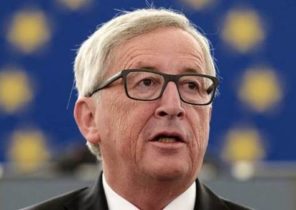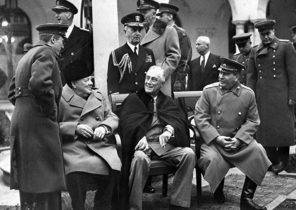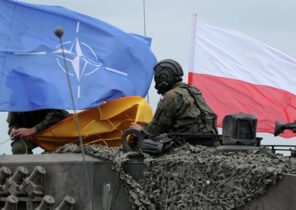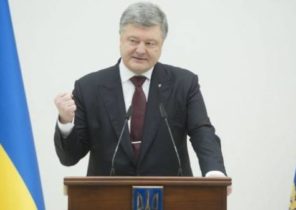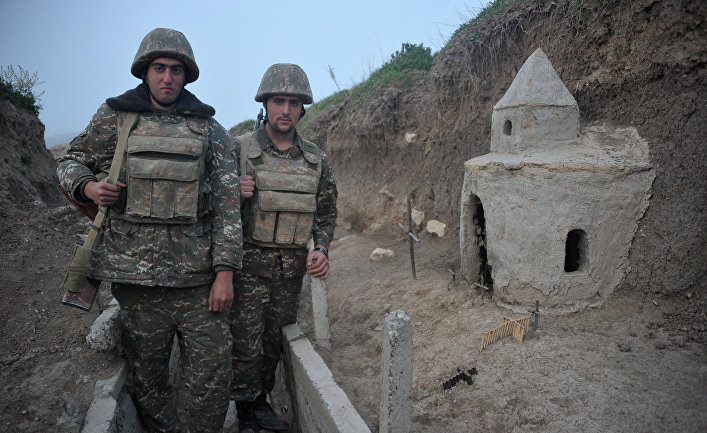
2016 was a difficult year for Armenia’s foreign policy, both from the point of view of effective maneuvering contradictions between the power centers (Russia and the West — approx. ed.) and promote their own interests in the international agenda.
Needless to say about the Armenian-Turkish and Armenian-Azerbaijani relations, given the, to put it mildly, hostile policy of Baku and Ankara toward Armenia. Aggression of Azerbaijan against Nagorno-Karabakh Republic and provided in this process Azerbaijan support Turkey has proved that we are unlikely to see normalization in the near future.
With two other neighbors — Iran and Georgia — Armenia throughout the years have been in active cooperation, taking steps to develop bilateral relations and realization of multilateral projects.
Relations of Armenia and Georgia in the region, in connection with the existing circumstances, was always the center of attention of the authorities. This year we also put considerable efforts on the development of Armenia’s relations with its Northern neighbor — Georgia. This is evidenced by the more than twenty visits of Prime Ministers, foreign Ministers, defense Ministers and other dignitaries.
Characteristically, the Armenian-Georgian relations are developing both in bilateral and in multilateral formats, including in 2016 increased significantly. Official Yerevan in the relations with Tbilisi is guided by the principle, who two years ago was declared by the President of Armenia Serzh Sargsyan — “different integration vectors should not harm the Armenian-Georgian relations, but rather to create new opportunities for development and deepening of these relations.”
From the point of view of bilateral relations, characterized by the opening in November of this year, the new building of the border checkpoint of Bagratashen.
With regard to relations of Armenia and Iran, it is safe to say that the year was successful and there has been significant progress in the development of bilateral relations.
A positive factor was the signing of the Declaration on the abolition of visa regime between Armenia and Iran, allowing the citizens of the two countries for 90 days is in the territory of another country without obtaining a visa. One of the important events from the point of view of development of bilateral trade— economic relations was held in October in Tehran exhibition “Expo Armenia — 2016”, which served as a good platform for the development of and networking between business structures of Armenia and Iran.
Effective was the session of the Armenian-Iranian intergovernmental Committee, held in early December in Tehran, in which it was decided to form four subcommittees for specific areas of cooperation.
The most important event of the year in the context of development of Armenian-Iranian relations was the official visit of Iranian President Hassan Rouhani in Armenia. During the meeting the two presidents discussed a number of issues, which include the increase in gas exports, the possibility of gas transit from Turkmenistan via Iran, the construction of the third line of Armenia — Iran, the prospects for the realization of transport corridor to Persian Gulf — Black sea, the formation of a free trade zone in the border village of Agarak in Syunik region. Also reached a number of agreements.
At the invitation of the President of Iran, in 2017, Iran will also visit the President of Armenia Serzh Sargsyan, which will give a new impetus to the development of Armenian-Iranian relations.
In addition to the Armenian-Georgian and Armenian-Iranian bilateral relations, Yerevan, Tbilisi and Tehran are cooperating effectively in the multilateral regional projects, and such projects 2016 to be productive.
One example of effective multilateral cooperation are launched projects in the fields of energy and transport. In April 2016 in Yerevan, the energy Ministers of Armenia, Russia, Iran and Georgia signed a road map for the formation of the power corridor North— South and the Memorandum of understanding. The power corridor project is a promising project, and to interconnect the energy systems of the four countries will give an opportunity to exchange electricity capacity of up to 1,200 Megawatts.
In the course of this year moved to the level of practical discussion is also the issue of supply of Iranian gas to Georgia, and as a possible transit countries have considered Armenia and Azerbaijan.
For 2016, Armenia, Georgia and Iran also cooperated in the implementation of the project to build a corridor from the Black sea to the Persian Gulf. In particular, have been developed and effectively tested a draft multimodal transportation. In November, the project was tested, two containers from Europe by waterway reached the port of Poti in Georgia and then at the railway station of Yeraskh in Armenia, and then on road transport to Iran.
Given the speed of transportation and the fact that this method of transit at a cost of 1-2 per cent cheaper than the same transportation in the territory of Turkey, this project has a great chance of implementation. Moreover, the authorities of Armenia and Iran, and Georgia are showing great interest in connection with the draft land corridor Black sea — Persian Gulf.
It is also characteristic that these two friendly countries of Armenia adhered to a balanced and neutral position during the four-day April war. They not only made the calls of the world, but with the offer of mediation, in contrast to Turkey, which in ett days was virtually the only country that their statements encouraged the bloodshed.
Summing up the regional policy of Armenia in 2016, I can definitely say that although the year was difficult from the point of view of threats, however, Armenia has managed to further deepen the cooperation with Iran and Georgia, make progress in the implementation of a number of important and promising projects that can provide a breakthrough isolation that Turkey and Azerbaijan used against Armenia.
Narek Minasyan, expert of the Analytical center for applied policy and research.
